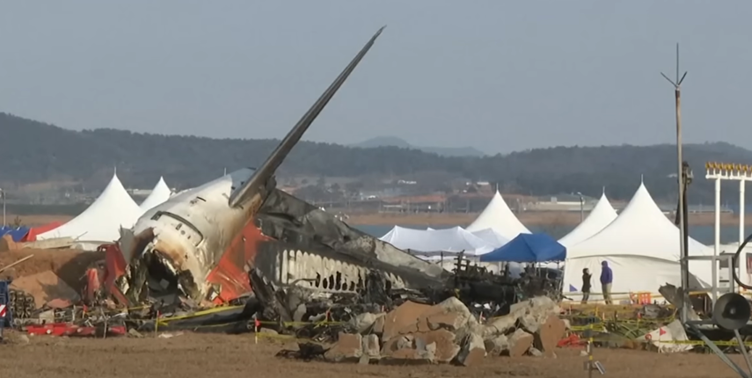South Korea’s transport ministry will remove the concrete embankment at the end of Muan International Airport’s runway, following the fatal crash of Jeju Air flight 2216 in December.
Investigators working on the crash are still not yet at a definitive conclusion as to what caused the accident but have indicated that supported navigation antennas at the end of the runway were a likely cause as to why the crash was so fatal.
Early indications from investigators and transport officials in the country suggest that the plane suffered a bird strike when approaching Muan International Airport.
The crash that took place on December 29, 2024, took the lives of 179 people, with only two crew members, who were seated in the rear galley of the aircraft, surviving. The crash is the deadliest to take place on South Korean soil.
Video of the crash appears to show the plane, a 737-800, performing a belly landing at the regional airport, skidding along the runway before slamming into an embankment.
The flight had been travelling from Bangkok to Muan.
Authorities in the country said they will make new foundations or adjustments for landing navigation aids at seven airports, including Muan, Gimhae International Airport, Gwangju International Airport, Yeosu Airport, Pohang Gyeongju Airport, Sacheon Airport and Jeju International Airport, that are either below ground level or “easy to break”.
“Muan International Airport plans to completely remove the existing concrete and reinstall the localiser in a fragile structure,” the ministry said in a statement.
This follows a ministry announcement on January 18, noting that Muan International Airport will remain shut until April 18, 2025.
The transport ministry also said that it will ensure a 240-metre (787-ft) long runway safety area at all airports to meet all relevant regulations.
Until regulations are improved, the country’s transport ministry plans to take "emergency safe operation measures" to ensure the safety of aircraft operations, such as sharing information with airlines, strengthening take-off and landing briefings, recruiting experienced pilots, and strengthening the dissemination of bird information.
Police have also confirmed that Son Chang-wan, the former president of the state-run Korea Airports Corporation, who was in office when the structure at Muan airport was renovated, was found dead in his home on January 21, of an apparent suicide.
Son was not currently under investigation, South Korean police confirmed.

